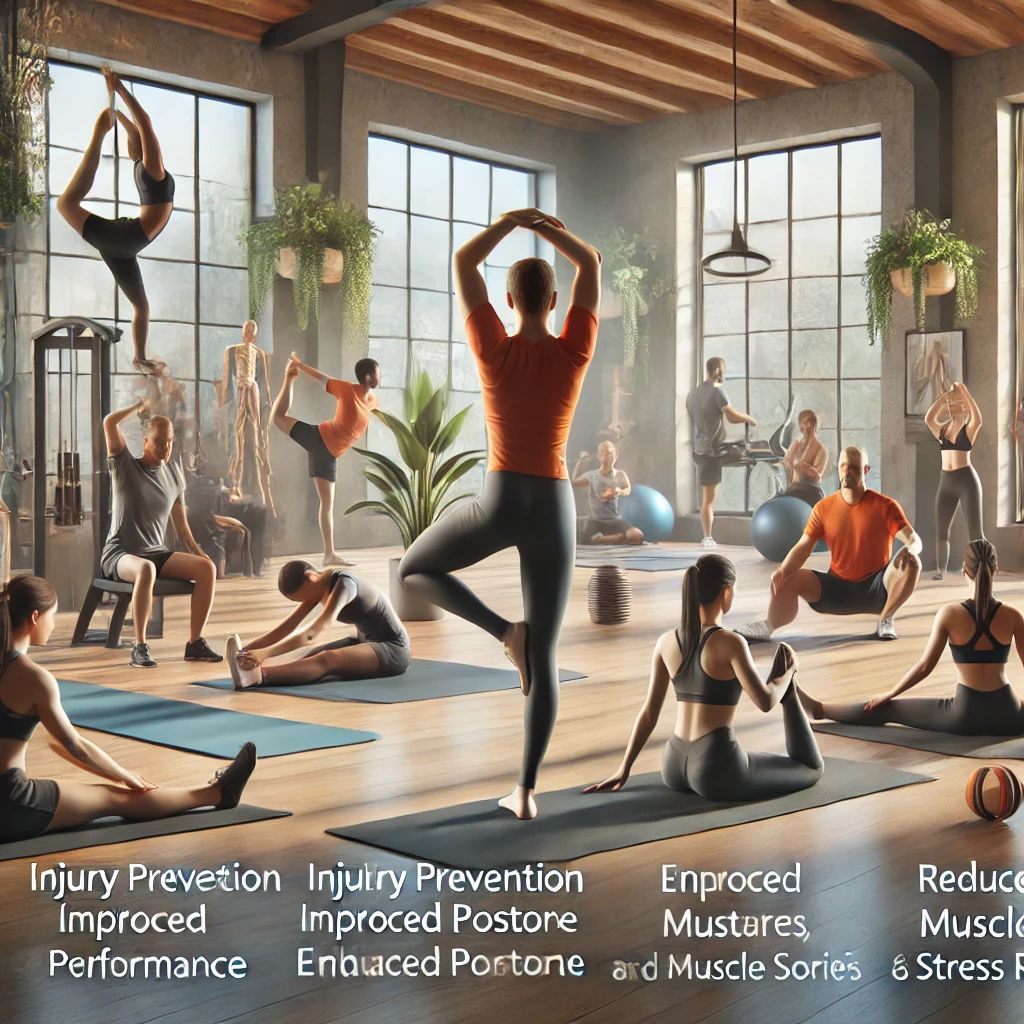
In the quest for fitness and health, flexibility often takes a backseat to more popular aspects like strength training and cardiovascular exercise. However, flexibility is a cornerstone of a well-rounded fitness regimen, playing a crucial role in overall physical health and performance. It enhances the body's ability to perform everyday activities with ease and reduces the risk of injuries. Let's explore the significant role of flexibility in fitness and how incorporating it into your routine can lead to a healthier, more balanced lifestyle.
Understanding Flexibility
Flexibility refers to the range of motion available at a joint or group of joints. It is influenced by muscle length, joint structure, and other factors such as age, gender, and physical activity levels. Flexibility allows for the smooth and efficient movement of the body, making it easier to perform both everyday tasks and more strenuous physical activities.
Muscle and Joint Health: Good flexibility helps maintain the health of muscles and joints, allowing them to move freely and efficiently. This reduces the strain on muscles during activities and helps prevent injuries.
Improved Mobility: Flexibility enhances overall mobility, making it easier to move through daily activities. This is particularly important as we age, helping to maintain independence and reduce the risk of falls.
Benefits of Flexibility
Incorporating flexibility exercises into your fitness routine offers a wide range of benefits that enhance both physical performance and overall well-being.
Injury Prevention: Flexible muscles are less prone to injury. Stretching helps lengthen muscles and tendons, which reduces the risk of strains, sprains, and other injuries during physical activity.
Improved Posture: Flexibility exercises help improve posture by balancing the tension in muscles across the body. This is especially beneficial for those who spend long hours sitting, as it helps alleviate back and neck pain.
Enhanced Performance: Flexibility can improve performance in physical activities and sports. Athletes often include flexibility training to increase their range of motion, allowing for more powerful and precise movements.
Reduced Muscle Soreness: Stretching after a workout can help reduce muscle soreness and stiffness. It aids in the removal of lactic acid and other waste products from muscles, promoting quicker recovery.
Stress Relief: Flexibility exercises, particularly those involving gentle stretching and deep breathing, can help reduce stress and promote relaxation. Practices like yoga and pilates are excellent for combining flexibility with mental well-being.
Types of Flexibility Exercises
There are several types of flexibility exercises, each serving a specific purpose and offering unique benefits. Incorporating a variety of these exercises can help you achieve optimal flexibility.
Static Stretching: This involves holding a stretch for a prolonged period, usually 15-60 seconds. Static stretching is effective for increasing overall flexibility and is best performed after a workout when muscles are warm.
Dynamic Stretching: Dynamic stretching involves moving parts of your body through a full range of motion. It is often used as part of a warm-up routine to prepare muscles for activity. Examples include leg swings and arm circles.
Active Stretching: In active stretching, you assume a position and hold it using the strength of your muscles. This type of stretching helps improve muscle control and flexibility simultaneously.
Passive Stretching: Passive stretching involves using an external force, such as a partner or stretching aid, to hold a stretch. This can help you achieve a deeper stretch than you might be able to on your own.
PNF Stretching: Proprioceptive Neuromuscular Facilitation (PNF) stretching involves a combination of stretching and contracting the muscle. It is highly effective for increasing flexibility and is often used in physical therapy.
Incorporating Flexibility into Your Routine
Integrating flexibility exercises into your fitness routine doesn't require a significant time commitment but can yield substantial benefits.
Daily Stretching: Aim to include at least 5-10 minutes of stretching in your daily routine. This can be done in the morning to start your day or in the evening to relax before bed.
Warm-Up and Cool-Down: Incorporate dynamic stretching into your warm-up routine to prepare your muscles for exercise. Follow your workouts with static stretching to promote flexibility and aid in recovery.
Yoga and Pilates: These practices are excellent for improving flexibility, strength, and balance. Consider incorporating a yoga or pilates class into your weekly routine.
Listen to Your Body: Pay attention to how your body feels during and after stretching. Never force a stretch, and avoid bouncing, as this can cause injury. Stretch to the point of mild discomfort, not pain.
Staying Motivated
Maintaining motivation for flexibility exercises can be challenging, but understanding their importance can help keep you committed.
Set Goals: Establish specific flexibility goals, such as touching your toes or improving your posture. Track your progress and celebrate milestones.
Find Enjoyment: Choose flexibility exercises that you enjoy. Whether it’s a calming yoga session or an invigorating dynamic stretch, find what works best for you.
Incorporate Variety: Keep your routine interesting by incorporating different types of stretches and activities. This prevents boredom and keeps you engaged.
Conclusion
Flexibility is a vital component of overall fitness and health, offering numerous benefits that enhance physical performance and well-being. By incorporating flexibility exercises into your routine, you can improve your mobility, prevent injuries, and enjoy a more balanced and healthy lifestyle. Embrace the importance of flexibility in your fitness journey, and discover how it can transform your body and mind. With regular practice, you’ll find that flexibility not only enhances your physical capabilities but also contributes to a sense of relaxation and mental clarity.


